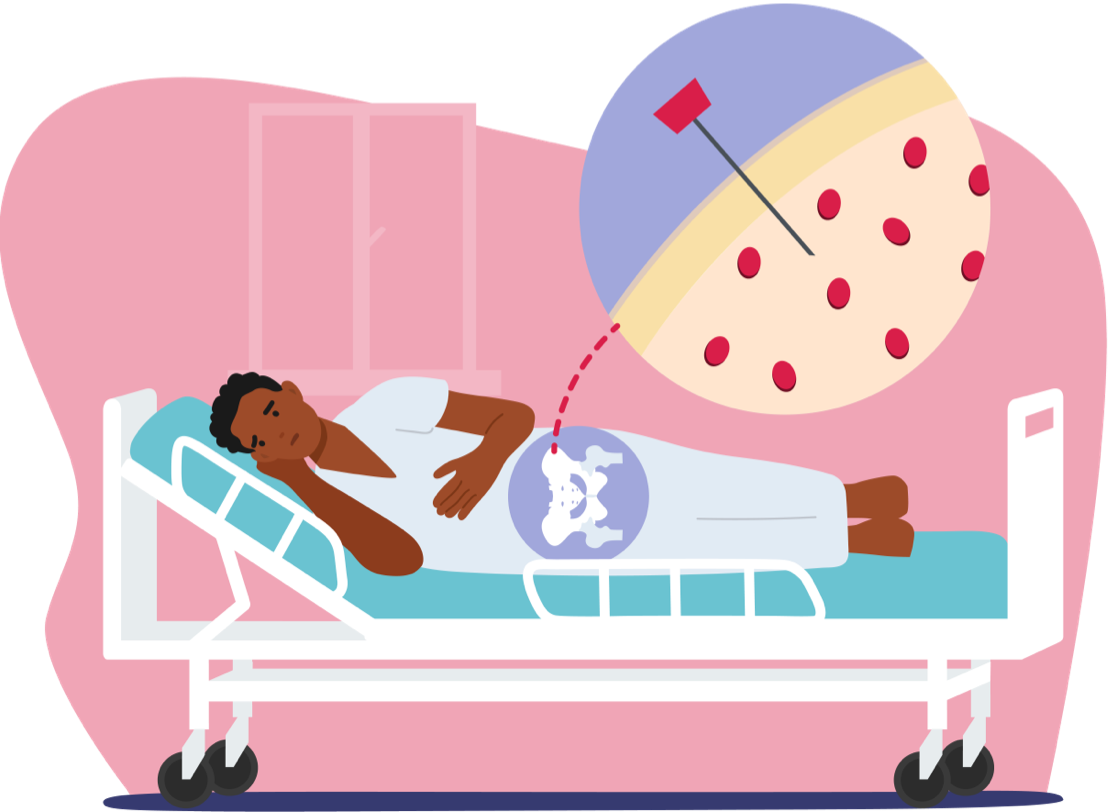Why does a relapse happen?
A relapse in AML happens because the cancerous AML cells can evolve and change over time.1 Think of AML cells like weeds in a garden—we treat weeds to stop them from growing and spreading to the rest of the garden, selecting the best treatment for the specific kind of weed identified. This is how healthcare teams initially target and treat AML.
However, there are two ways that both weeds and cancerous AML cells occur again:

- The weeds are never completely removed or become resistant to treatments over time and begin to grow again. Similarly, some AML cells may survive the initial round of treatment and begin multiplying again, requiring a different treatment approach. This is called refractory AML.2
- Although using weedkillers can destroy certain weeds successfully, it may be that new or different weeds grow in their place. This is seen in people with AML who achieve remission, and then have a return of AML cells that require a new treatment approach. This is known as relapse.2
In AML, healthcare teams may conduct measurable residual disease (MRD) monitoring, which is an assessment of the cancer at an extremely low level, before you experience any symptoms.3 Think of MRD like looking at weeds under the soil before they grow, in order to predict which type of weed will grow above the soil. This is done to help act early and prevent relapse when possible.3
When a relapse occurs, healthcare teams often detect this through regular monitoring and tests, or some people may experience new or the return of old symptoms. If your team suspects that you are experiencing a return of AML this will be confirmed through tests, which may include blood and bone marrow. Your doctors will also typically carry out further genetic tests on the blood cells in your bone marrow, these will give them more information on the subtype of AML and allow them to better tailor your treatment.4
Depending on how long you have been in remission, this may affect the treatment options available for you. For example, if your AML has remained in remission for a long time (5+ years) – some treatments you received previously could potentially be considered again. Your doctor will be able to provide more information about your specific situation.
It is important to remember that every AML diagnosis is unique, and that a treatment that works for one person may not work for another. If you are experiencing relapse, this means that certain treatments will no longer work for you, and it will be necessary to explore new and different treatment options.
Alisdair was diagnosed with a relapse following his first round of treatment. Watch this video to learn how he coped with his relapse.
Need support understanding specific AML words and phrases? Our Terminology Explained document helps to break down some of the most common terms and phrases.
References
1. Leukaemia Care. Relapse in Acute Myeloid Leukaemia (AML). https://media.leukaemiacare.org.uk/wp-content/uploads/Relapse-in-Acute-Myeloid-Leukaemia-AML-Web-Version.pdf [Last accessed November 2022].
2. Medical News Today. AML relapse: What it means and treatment options. https://www.medicalnewstoday.com/articles/aml-relapse [Last accessed November 2022].
3. Hourigan CS, Karp JE. Minimal residual disease in acute myeloid leukaemia. Nat Rev Clin Oncol. 2013;10(8):460–471.
4. Thol F, Gancer A. Treatment of Relapsed Acute Myeloid Leukaemia. Curr Treat Options Oncol. 2020;21(8):66.
5. Saultz JN, Garzon R. Acute Myeloid Leukemia: A Concise Review. J Clin Med. 2016;5(3):33.
6. Gregory TK, Wald D, Chen Y, et al. Molecular prognostic markers for adult acute myeloid leukaemia with normal cytogenetics. J Hematol Oncol. 2009;2:23.
7. NHS inform. Palliative care. https://www.nhsinform.scot/care-support-and-rights/palliative-care [Last accessed November 2022].
MAT-UKE-NON-2022-00013 | February 2023

